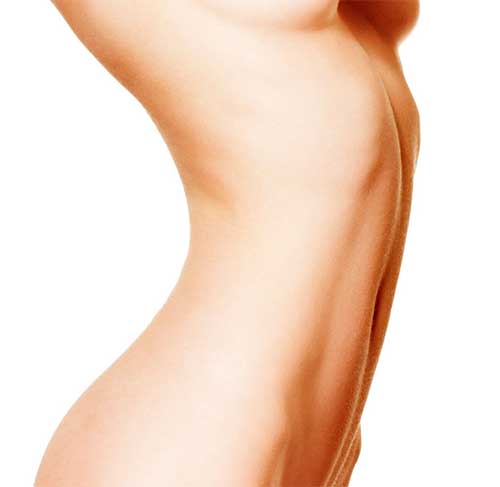Body
LIPOSUCTION
WHAT IS LIPOSUCTION?
Liposuction is a surgical procedure to remove unwanted deposits of lumpy, bulgy fat from specific areas of the body including the face, neck, upper arms, trunk, abdomen, buttocks, hips, thighs, knees, calves, and ankles using slender metal tubes (cannulae) and a medical vacuum. The best candidates for liposuction are individuals of relatively normal weight who have excess fat in particular body areas.
WHAT SHOULD I KNOW?
Ideal candidates for liposuction are healthy, active, and within 12 to 15 percent of their ideal weight with relatively good skin tone and elasticity. For safety, three liters of fat is the maximum that can be removed during a single session, so some candidates choose to have a follow-up procedure, which must take place at least three months after the first.
WHAT DOES THE PROCEDURE INVOLVE?
Depending on the extent of removal, local or general anesthesia will be used. A tiny incision is made in the designated areas and a solution is injected; this diffuses through the targeted fat within 10 minutes. The solution numbs the area and reduces bleeding. The cannula is inserted and a medical vacuum pump sucks out fat; skin retracts onto the underlying tissues. The procedure takes 30 minutes to two hours. Patients receive intravenous fluids to prevent dehydration, and most go home a few hours after the surgery.
HOW LONG IS RECOVERY AND WHEN CAN I RESUME MY NORMAL ACTIVITIES?
Expect to wear a compression garment around treated area 24 hours/day for up to three to four weeks, then 12 hours/day for the next three to four weeks. This will reduce swelling and ensure proper healing. Swelling and bruising may last for up to a month, and short-term water retention is possible. The treated area may feel hard (and in some cases have an orange hue) for two to three weeks following surgery due to scar tissue, which is part of the healing process and will settle over time. Final results should be apparent within three months. Most patients return to work one to five days after surgery. Expect to begin light cardio within seven days, moderate physical activity (including light strength training) in three weeks, and strenuous activity six weeks following surgery. Full recovery from swelling and bruising typically takes one to six months or more.

